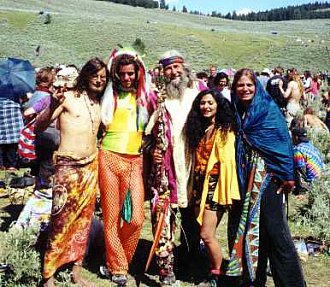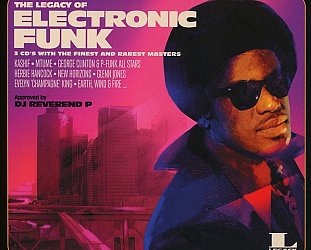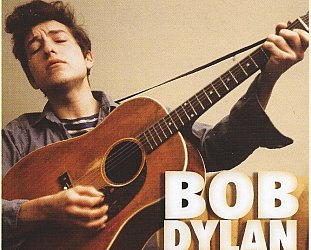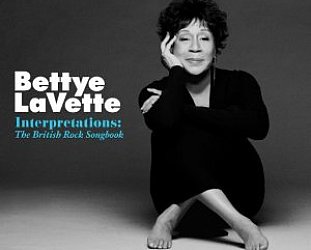Graham Reid | | 3 min read
Santana: Life is a Lady/Holiday

Indeed, just what did happen to hippies?
Well, some stayed true to the code, others became yuppies, some argued computer technology was the new path to universal peace through better communication, some just stayed stoners or ended up homeless and drifting,, most had kids and that rather changed things, and others . . .
Who knows? People took their own direction.
One thing is clear: Charles Manson, the Altamont concert, Vietnam and Richard NIxon's presidency changed the way many American hippies felt . . . so a lot just hunkered down and hoped to ride out the storm.
And the music changed too. Paul Simon's American Tune (see the clip here) perhaps spoke for more younger and jaded Americans in the mid-Seventies than anything by the Grateful Dead.
 But in the Sony Music budget-price CD sets (five for $20 through JB H-Fi stores here), you can catch up with how some of the musicians and bands who started in the hippie era or were emblematic of it progressed, changed . . . and maybe even retreated.
But in the Sony Music budget-price CD sets (five for $20 through JB H-Fi stores here), you can catch up with how some of the musicians and bands who started in the hippie era or were emblematic of it progressed, changed . . . and maybe even retreated.
We start with the obvious . . .
Jefferson Airplane: Takes Off/Surrealistic Pillow/After Bathing at Baxters/Crown of Creation/Bless Its Pointed LIttle Head
This collection starts with the debut album which had Signe Anderson on vocals and the then-healthy Skip Spence (later of Moby Grape) on drums. But really the band belonged to the songwriters Marty Balin and Paul Kantner. Some fine songs (Blues from an Airplane, It's No Secret) but it was the second album -- with Grace Slick singing and new drummer Spencer Dryden -- where things really happened: the hit singles Somebody to Love and White Rabbit among them.
Things went rather more shapeless for Baxters, despite it beng more ambitious musically, and Crown of Creation. And Bless is a live album from late '69, so this collection cuts off just before they became very political on the still powerful Volunteers.
But a good collection of their key early years -- with various alternate takes, single mono versions and so on. For more on Jefferson Airplane at this time go here.
Jefferson Starship: Dragon Fly/Red Octopus/Spitfire/Earth/Freedom at Point Zero
And this collection of albms from the Seventies answers our initial question. After many and various solo projects which ran parallel, and line-up changes -- and a new name -- they became a very slickly-produced band with quite a number of pop songs to their credit.
Hippies didn't much to take this new model, but Red Octopus (featuring Papa John Creach on electric violin who had joined the line-up for Dragon Fly) still possesses considerable mainstream charm. Spitfire and Earth weren't quite its equal but -- if you can pretend you never head Jefferson Airplane -- aren't quite as bad as many said at the time.
Fortunately this set cuts off before We Built This City on Rock and Roll.
The Byrds: Sweetheart of the Rodeo/Dr Byrds and Mr Hyde/Ballad of Easy Rider/Byrdmaniax/Farther Along
Although never strictly hippies -- although they did give us Eight Miles High -- the Byrds made one of the more interesting departures, as witnesed by this collection which starts with their cornerstone country-rock album Sweetheart (a move which in retrospect had been anticipated in places on the earlier Notorious Byrds Brothers). Now with Gram Parsons fully on board, and some Nashville session musicians, they were moving to a quieter sound, coincidently at the same time as Bob Dylan whose material had given them the template for folk-rock just a few years previous.
Country and lightlydelic music began to run as a thread over the next albums (with Roger McGuinn co-writing with Dylan also) but Byrdmaniax remains disappointing . . . and although Farther Along cemented their critical reputation again it was met by public disinterest. By this time there had been too many Byrds albums, and too many Byrds.
Santana: Inner Secrets/Marathon/Zebop!/Shango/Freedom
If any artist epitomse the spirit of the Woodstock Nation it was Carlos Santana who not ony made his reputation at that festival but seems to have remained true to the ethos (see this interview) and, more worryingly, the clothing. His key albums came before this collection (see here) and they are certainly worth having.
The other collection in this series mentioned in that overview mostly gathered up his albums during what we might call his "overtly spiritual period" (he's still spiritual of course) but easing towards commerical rock. And that is where this collection finds him (with vocalist Greg Walker on Inner Secrets, who sounds like a slightly lesser Steve Winwood, an impression driven home by them covering Buddy Holly's Well All Right which Winwood did with Clapton in Blind Faith).
But after that it is a band with a revolving door membership (as always) and the sole constants are that distinctive guitar sound, the Latin influence and a some rather dull song-vehicles for both. The final album here Freedom -- this set skips the even lesser Beyond Appearances -- has the excellent keyboard player Greg Rolie back in the line-up (and Buddy Miles who sings).
So very much a mixed bag of fine individual moments scattered across albums which were clearly aimed at the commercial FM radio, but most often failed to grip even there.
Hippies had moved on and even though Carlos had too, they'd gone in different directions.





post a comment